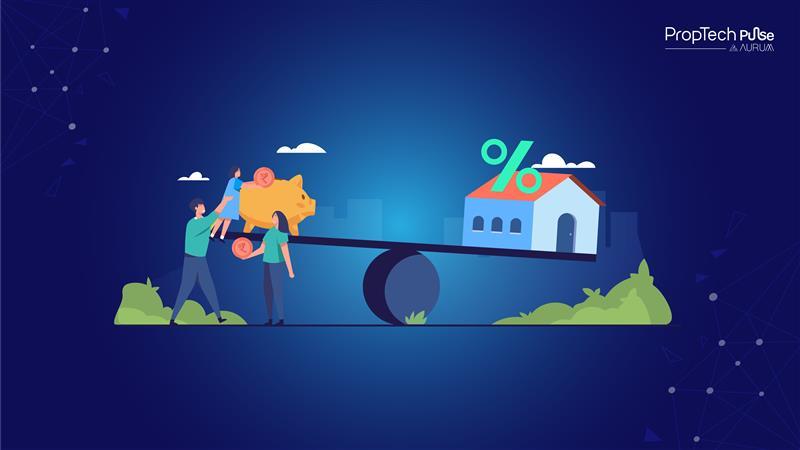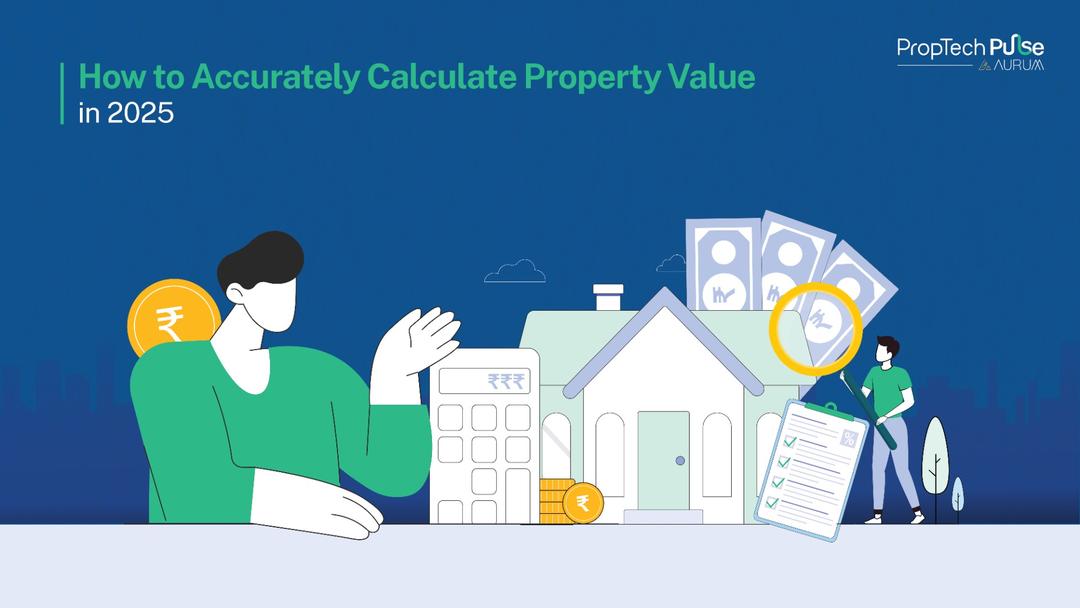Business Strategies

What are Fixed Interest Rates?
Fixed interest rates are like locking in your loan at a set EMI, no matter how the market moves. They give borrowers the comfort of consistency, as the rate agreed upon at the start stays the same throughout the loan tenure. Let's break this down further:
Definition and How Fixed Interest Rates Work
A fixed interest rate means the rate will not change during the period of the loan. No matter whether you take a homeowner's loan for 5 or 20 years, EMI as well as the rate of interest are consistent. That is, regardless of changes in the market and RBI policy rates, your monthly payments are certain.
Advantages of Fixed Interest Rates
- Stability: EMI remains the same, making budgeting simpler.
- Protection from rate hikes: The ups and downs in the market will not impact your loan.
- Peace of mind: A solution for borrowers that are sensitive to risk and are in favor of stability.
When to Choose Fixed Interest Rates
Fixed rates are only advantageous when rates are low but soon to escalate, otherwise, it is not a good choice. They're an excellent option when you have a long-term financial plan, and you do not want to suddenly see a jump in EMI.
For example, salaried individuals with steady incomes often prefer fixed rates to avoid financial stress during interest rate hikes.
What are Floating Interest Rates?
Variable rates or floating rates are the other names for floating interest rates. They keep changing with market conditions most of the time. Unlike fixed rates, the EMI can change over time, reflecting shifts in the underlying benchmark interest rate. Let's dive into the details:
Definition and How Floating Interest Rates Work
A floating interest rate is tied to an external benchmark, such as the repo rate or the MCLR (Marginal Cost of Funds Based Lending Rate). When the benchmark rate changes, your EMI changes accordingly, meaning your payments could go up or down.
Pros of Floating Interest Rates
| Advantage | Explanation |
|---|---|
| Lower Initial Rates | Floating rates usually start lower than fixed rates. |
| Potential for Reduced Payments | If the benchmark rate decreases, your EMI will go down. |
| Flexibility | Allows flexibility to benefit from favorable market changes |
| Long-Term Savings | Over the loan term, lower rates may result in lower total interest paid |
When to Choose Floating Interest Rates
Go for a floating rate when the market is steady or is predicted to be going down. It is the best option if you are fine with little variation and can afford to pay the fluctuation in your monthly payments, usually appropriate for long-term loans or high-risk borrowers.
For example, If you're planning to take a home loan for 20 years and expect interest rates to decrease over the long term, a floating rate would be beneficial. You could start with lower EMIs, and if the rates go down, your payments will reduce, making it more affordable
Key Differences Between Fixed and Floating Interest Rates
Understanding how fixed and floating interest rates differ can help you choose the right one for your financial needs. Here's a side-by-side comparison:
Payment Stability vs. Flexibility
| Aspect | Fixed Interest Rate | Floating Interest Rate |
|---|---|---|
| Payment Stability vs. Flexibility | Offers consistent EMI throughout the loan tenure, ensuring budgeting stability. | EMIs fluctuate based on market rates, offering flexibility but less predictability. |
Impact of Market Conditions
| Aspect | Fixed Interest Rate | Floating Interest Rate |
|---|---|---|
| Impact of Market Conditions | Unaffected by changes in interest rate trends or economic policies. | Directly linked to market benchmarks like repo rate or MCLR—rates may rise or fall. |
Long-Term Financial Implications
| Aspect | Fixed Interest Rate | Floating Interest Rate |
|---|---|---|
| Long-Term Financial Implications | You may pay slightly more in interest overall for the peace of mind of fixed payments. | Can lead to significant savings if interest rates drop, but also potential for increased costs if rates rise. |
Advantages and Disadvantages of Fixed Interest Rates
Fixed interest rates come with their own set of benefits and limitations. Let's break it down so you can understand where they shine and where they might not.
Stability in Payments and Budgeting
The stability given by fixed interest rates is one of the greatest benefits. The EMI amount remains the same throughout the loan tenure, and allows you to plan your monthly budget without worrying about the ups and downs of the market.
This predictability is especially helpful for first-time borrowers or those with a fixed income that can't change.
Higher Initial Rates and Limited Flexibility
The flip side is that fixed interest rates usually start slightly higher than floating ones. And while they protect you from rising market rates, they don't let you benefit when rates drop. Plus, many fixed-rate loans come with prepayment penalties, which can limit your flexibility if you plan to repay your loan early or refinance it.
Ideal Loan Scenarios for Fixed Interest Rates
Fixed interest rates are the best choice when market rates are expected to rise or remain volatile. For example, if you're taking a home loan during a time of economic uncertainty or inflation, locking in a fixed rate can offer peace of mind.. It is also a great option if your home-buying decision is influenced by the fact that you are barely able to meet a tight monthly budget.
Now let us look into the advantages and disadvantages of the floating interest rates.
Advantages and Disadvantages of Floating Interest Rates
Floating interest rates can be a smart choice depending on your financial goals and the market outlook. Let's explore their pros, cons, and best-fit scenarios.
Potential for Lower Initial Rates
- Lower Starting EMIs: Floating interest rates typically begin lower than fixed rates, offering early savings.
- Benefit from Rate Drops: If market interest rates decline, your loan interest reduces automatically.
- Flexible Prepayments: Usually no penalties on prepayments or foreclosure, allowing you to repay faster if finances allow.
Vulnerability to Market Fluctuations
- Unpredictable EMIs: Your monthly outflow can increase if market interest rates rise.
- Difficult Budgeting: Financial planning becomes less predictable due to fluctuating EMIs.
- Potential Higher Costs: If rates rise consistently, you may end up paying more over the loan tenure.
Ideal Loan Scenarios for Floating Interest Rates
Floating interest rates suit borrowers who:
- Expect interest rates to fall in the near future.
- Can easily manage fluctuating EMIs.
- Intend to repay or close the loan earlier than that, avoiding long-term coverage.
For example:
Rohit, salaried professional, selects a loan with a variable interest rate when the rates are at the highest level. As he is going to pay off the majority of his loan within 5 years, he anticipates that lower rates will be the cause of a significant decrease in expenses.
How to Choose Between Fixed and Floating Interest Rates
Deciding between a fixed and floating interest rate is more than just picking the lower rate it's about aligning your loan type with your financial behavior, goals, and market outlook. Let's break down how you can make an informed decision.
Assessing Your Risk Appetite and Financial Goals
Comparing Rate Offers from Lenders
Lenders don't just differ in rate values, they vary in structures and hidden costs. Here's what to check:
| Factor | What to Look For |
|---|---|
| Effective Interest Rate (EIR) | The total cost over the loan tenure, not just the advertised rate. |
| Spread & Benchmark Rate | For floating rates, check how often the benchmark changes. |
| Lock-in-period | Fixed-rate loans may have a penalty if closed early. |
| Conversion Charges | Switching from fixed to floating (or vice versa) may carry a small fee, remember to ask upfront. |
| Prepayment Flexibility | Floating rates usually offer more room to prepay without penalties. |
When to Switch Between Fixed and Floating Interest Rates
Switching between interest types is a smart financial move. The trick is knowing when the timing is in your favor.
Switch from Fixed to Floating When:
- There are expectations of falling market rates and the rates are experiencing a downslide and further downslide in the future.
- It's the time when the lock-in period is over and prepayment penalty or fee is not an issue.
- The situation in which you have a feeling of paying off your debt very quickly and having an advantage of flexibility
Switch from Floating to Fixed When:
- When Interest rates have gone up, the burden of paying off the loan interest is high and creates difficulties for your budget.
- You are approaching your retirement or a special event in your life
- You'd rather have a clear spectrum of your income than to be always after the decreasing rates
Pro Tip: Always run the math. Use your lender's conversion calculator or ask them for a personalized quote before switching.
Factors That Influence Floating Interest Rates
Floating interest rates don't remain constant, they rise or fall based on several external factors. Understanding what drives these changes can help you decide whether to opt for a floating rate or time your loan better.
Central Bank Policies
The Reserve Bank of India (RBI) plays a key role in setting the tone for interest rates.
- Normally, when the RBI reduces the repo rate (the rate at which it lends to banks), the floating rates go down.
- In case of a repo rate rise to control the prices, the rates of floating loans mostly go up.
- On the contrary, a lower repo rate can reduce your EMIs.
Economic Factors Affecting Floating Rates
- Economic instability usually leads to rate hikes, while downturns may trigger rate cuts.
- Inflation: Higher inflation often prompts the RBI to increase rates.
- Currency fluctuation: A weaker rupee may lead to tighter monetary policy
- Global events: Oil prices, war, or financial crises can influence interest rate direction.
- Growth outlook: During low economic growth, central banks may lower rates to spur lending.
Timing and Future Rate Predictions
Timing plays a pivotal role in determining how favorable a floating interest rate will be for you. When you take out a loan, the current market rates may not reflect long-term trends. Experts predict rate cuts or hikes based on economic conditions, inflation, or central bank decisions.
If interest rates are expected to drop in the near future, opting for a floating rate could save you money. However, if a rise in rates is on the horizon, locking in a fixed rate may protect you from increasing costs. Monitoring economic forecasts and RBI policy changes can help you make a more informed decision.
Conclusion
In conclusion, the decision to use either fixed or floating interest rates is basically dependent on your financial objectives and risk capacity. On other hand, fixed rates yield constancy and regular payments whereas floating rates bring a possibility of cutting down expenses but with a chance of higher payments.
Evaluate your financial status, duration of the loan, and the condition of the market to take the right path that is in line with your financial necessities and preferences.
Unlock the Latest in Real Estate
News, Infographics, Blogs & More! Delivered to your inbox.
“Data that drives action. Insight that inspires action. Technology that empowers action.“
“Data that drives action.
Insight that inspires action.
Technology that empowers action.“









